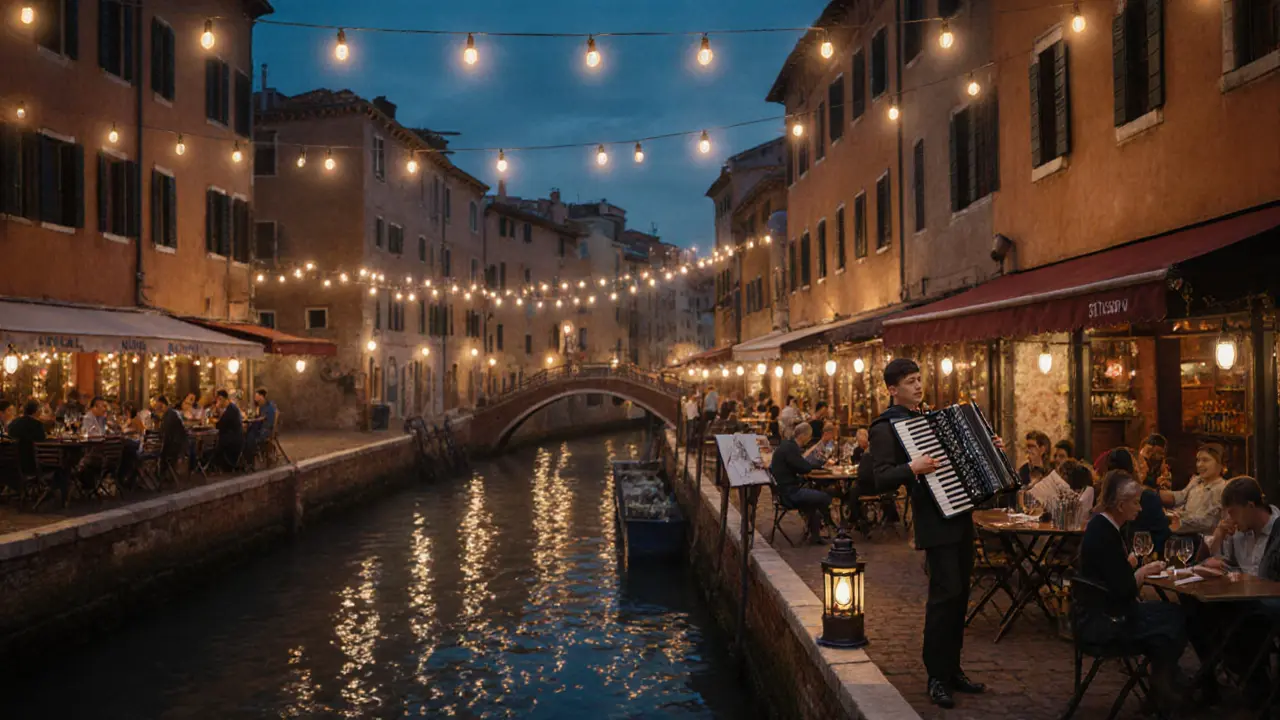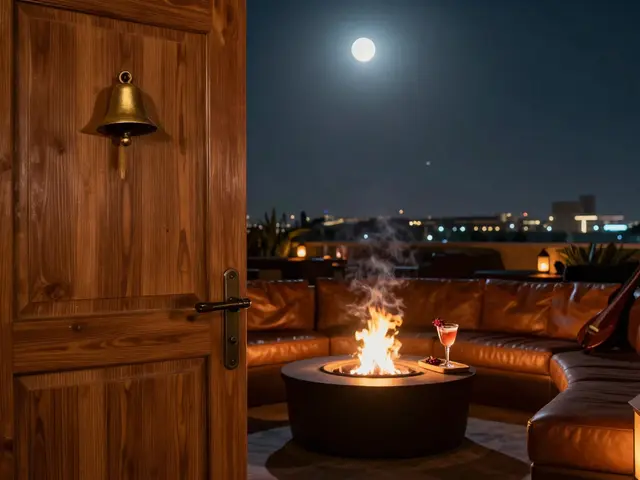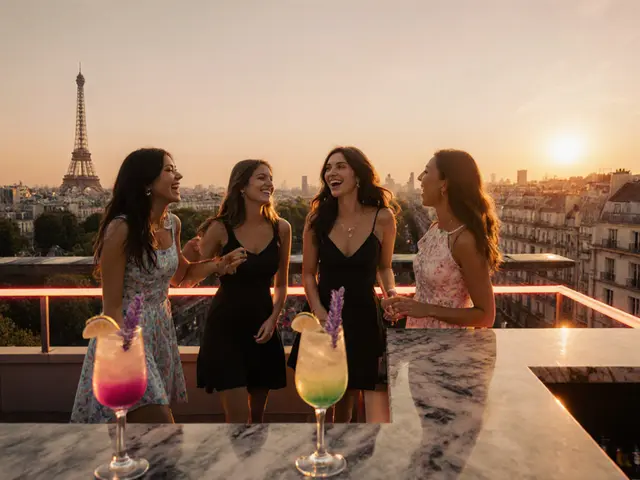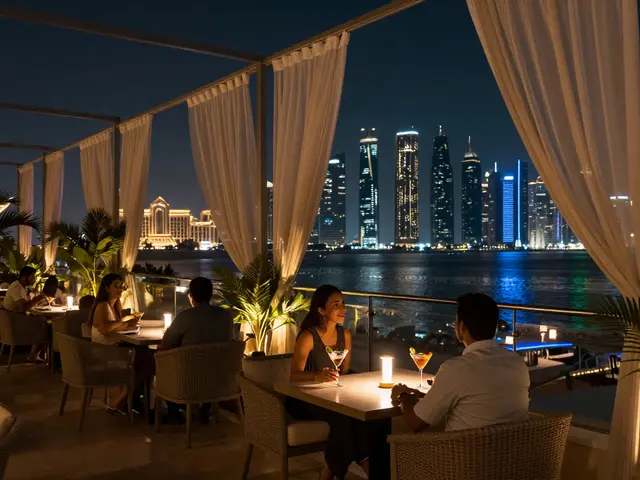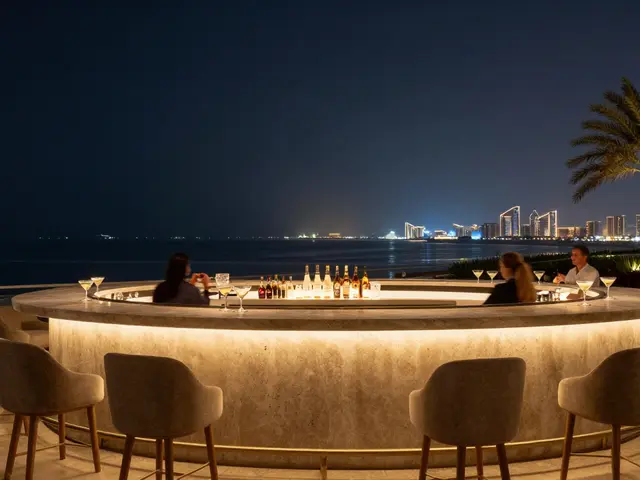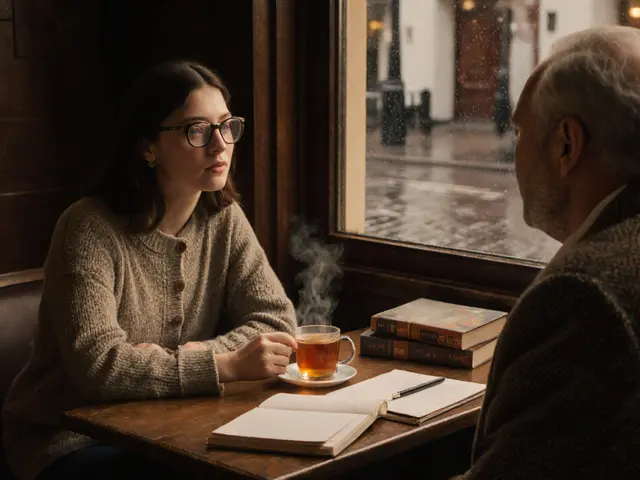The Top 10 Places to Experience Nightlife in Milan
Forget the daytime sights-Milan comes alive when the sun goes down.
Most visitors think of Milan as fashion capital, a city of sleek boutiques and designer cafés. But by 10 p.m., the streets shift. The leather jackets swap for velvet blazers, the espresso gives way to Aperol spritz, and the quiet alleys of Brera turn into buzzing corridors of music, laughter, and clinking glasses. This isn’t just a city that has nightlife-it’s a city that lives for it.
1. Navigli District: Where the Canals Come Alive
If you want to see Milan’s soul after dark, head to Navigli. This historic canal district isn’t just pretty by day-it’s electric by night. The banks of the Naviglio Grande fill with locals and tourists alike, sipping wine under string lights. Bars here aren’t loud clubs; they’re cozy, open-air spots where conversation flows as easily as the water. Try La Corte dei Miracoli for live jazz, or Bar Basso for a classic Negroni made the way it was invented in 1919. You’ll find people dancing on the sidewalks, artists sketching in the dim light, and the occasional accordion player serenading a group of friends. It’s not touristy-it’s Milanese.
2. Brera: The Bohemian Heartbeat
Brera feels like a secret only locals know. Narrow cobblestone streets, ivy-covered buildings, and art galleries that close by 7 p.m. give way to intimate wine bars and speakeasy-style lounges after dark. Bar Basso (yes, it’s here too) is a legend-its dim lighting and velvet booths feel like stepping into a 1950s film. But don’t miss La Bicocca, a tiny bar tucked behind a bookshop that only opens at 9 p.m. and serves natural wines from small Italian vineyards. This is where Milan’s creatives unwind-writers, painters, musicians. No neon signs. No bouncers. Just good drinks and even better company.
3. Corso Como: Style Meets Sound
Corso Como is where Milan’s elite go to be seen-and heard. The area around Corso Como 10 isn’t just a bar; it’s a cultural hub that started as a design store and evolved into a nightlife institution. Corso Como 10 has a rooftop terrace with panoramic views of the city, a vinyl-only DJ booth, and a menu that blends Italian aperitivo with global bites. It’s not cheap, but it’s worth it. The crowd? Fashion influencers, artists, and international visitors who know this is where Milan’s elite gather after dinner. The music? Think deep house and indie electronica, not top 40 hits. You won’t hear the same song twice.
4. Isola: The New Cool
Isola used to be an industrial zone. Now it’s Milan’s most exciting nightlife frontier. Once-abandoned warehouses have turned into underground clubs and craft beer bars. Bar Strega is the place to start-dark, moody, and packed with locals who know the best cocktails in town. Then head to Stazione Isola, a converted train station that hosts live electronic acts and experimental sound installations. The vibe here is raw, unpolished, and authentic. No velvet ropes. No dress codes. Just good music and people who care more about the beat than the brand. If you want to see where Milan’s next big thing is brewing, this is it.
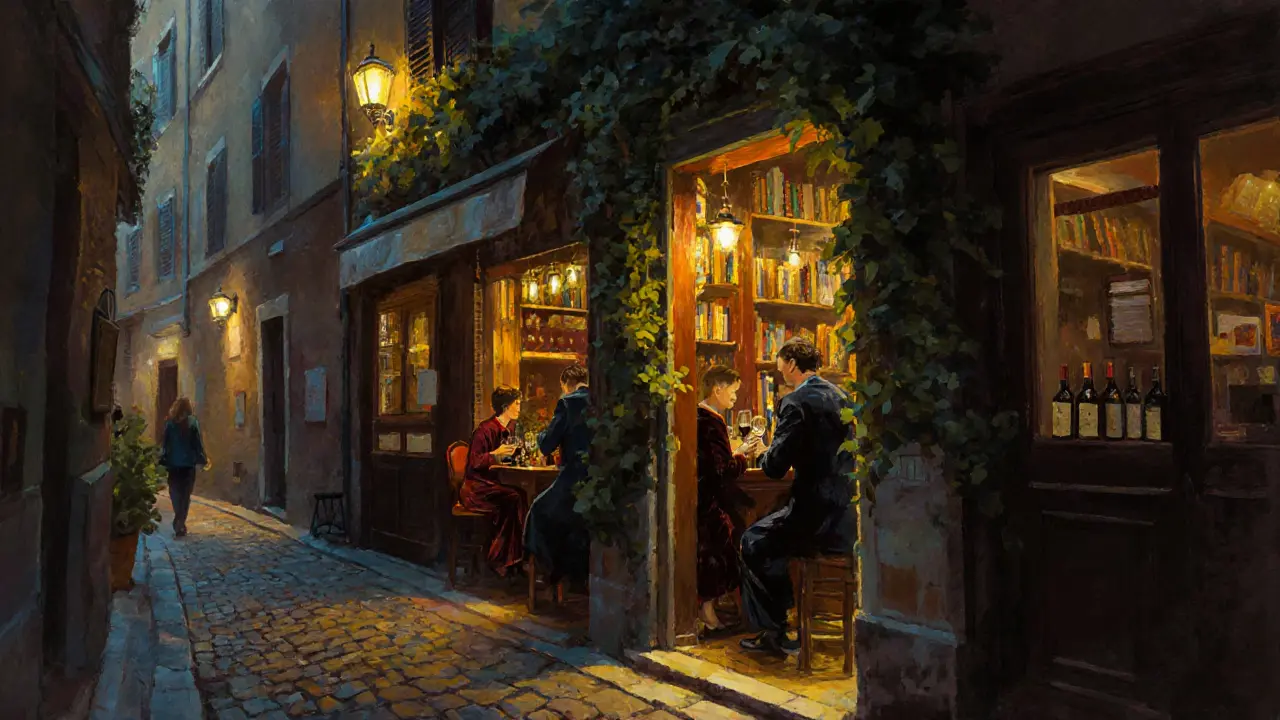
5. Porta Venezia: The Rainbow of Nightlife
Porta Venezia is Milan’s most diverse neighborhood-and its most welcoming nightlife scene. This area has been a cultural melting pot for decades, and its bars reflect that. Bar Basso (again, it’s everywhere) is here too, but don’t skip La Casa del Vino, a queer-friendly bar with drag shows every Friday and karaoke nights that turn into full-blown dance parties. The crowd here is young, open-minded, and loud-in the best way. You’ll find people from every background, from university students to retirees, all dancing together. The drinks? Affordable. The energy? Unmatched.
6. Piazza del Duomo and Surroundings: Glamour with a Side of History
Don’t underestimate the area around Milan’s cathedral. By night, the Duomo glows under soft lighting, and the surrounding streets turn into a playground for those who want luxury with a side of history. Terrazza Aperol on the rooftop of the Galleria Vittorio Emanuele II offers one of the best views of the city-plus a perfectly balanced spritz. Nearby, Bar Luce, designed by Wes Anderson, feels like a 1950s Italian cinema lounge. It’s quiet, elegant, and perfect for a slow evening with a friend. This isn’t the place for dancing until dawn-it’s for sipping, staring, and soaking in Milan’s timeless elegance.
7. Lambrate: Hidden Gems and Late-Night Eats
Lambrate is where Milan’s foodies and night owls collide. This neighborhood doesn’t have flashy clubs-it has holes-in-the-wall that stay open until 4 a.m. La Cucina di Nonna serves truffle pasta until sunrise, while Bar del Fico turns into a jazz bar after midnight with live piano and smoky cocktails. The crowd here is local, loyal, and unimpressed by trends. You’ll find engineers, nurses, and artists who’ve been coming here for 20 years. If you want to see how real Milanese people spend their nights-not what Instagram says they do-this is your spot.
8. Zona Tortona: Design, Art, and After-Hours
During the day, Zona Tortona is a design district. At night, it becomes a playground for creatives. Spazio Flos and Arti & Mestieri host pop-up bars and art installations that turn into late-night parties during design week-but even outside of events, you’ll find intimate lounges with curated playlists and handcrafted drinks. The vibe is quiet but electric-think candlelit corners, abstract sculptures, and people debating philosophy over a glass of Lambrusco. It’s not loud. It’s not crowded. But it’s unforgettable.
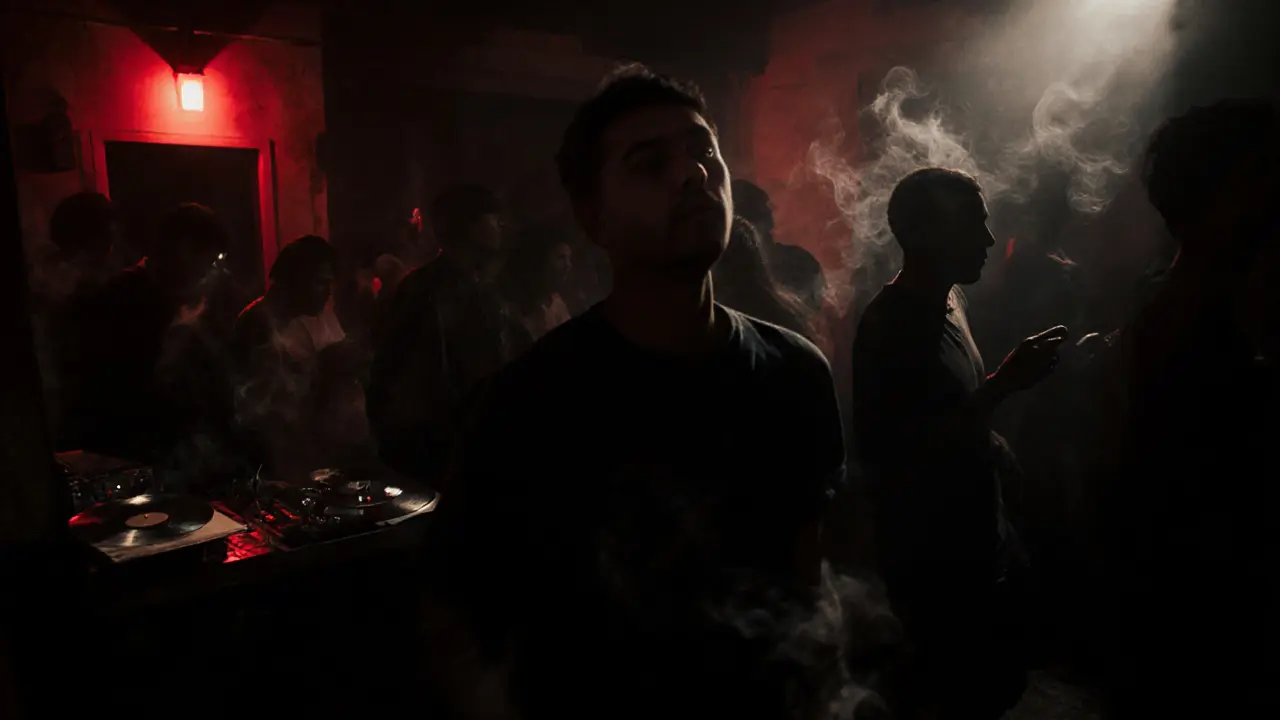
9. Via Tortona: The Underground Scene
Just off Zona Tortona, Via Tortona is where the real underground thrives. This street doesn’t have signs. You find it by word of mouth. La Cucina di Nonna (yes, same name, different spot) has a back room that turns into a techno club after 1 a.m. No bouncer. No cover. Just a single red light above the door. Inside, it’s dark, sweaty, and perfect. The DJs play rare vinyl from the 90s and early 2000s-no remixes, no presets. This is where Milan’s electronic music scene was born. If you’ve never danced in a room where the walls vibrate and the air smells like sweat and incense, you haven’t experienced Milan nightlife yet.
10. The Rooftop Bars: Milan from Above
If you want to end your night with a view, head to one of Milan’s rooftop bars. Skyline Rooftop at the NH Collection Milano President offers 360-degree views of the Duomo, the Galleria, and the Alps in the distance. La Terrazza at the Mandarin Oriental is quieter, more refined, with cocktails made with local herbs and flowers. These aren’t places to dance-they’re places to reflect. Sip something cold, watch the city lights flicker on, and realize you’re standing in one of the most beautiful urban landscapes in Europe. It’s the perfect bookend to a night that started with aperitivo and ended with a sunrise.
What to Know Before You Go
Milan’s nightlife doesn’t start early. Most places don’t fill up until after 11 p.m. and peak between 1 a.m. and 3 a.m. Aperitivo (5-8 p.m.) is a ritual-pay €10-15 for a drink and get a buffet of snacks that could pass for dinner. You won’t find American-style happy hours here. You’ll find tradition.
Dress code? It’s casual-smart. No sneakers in Brera or Corso Como. No tank tops in upscale spots. Jeans and a nice shirt are fine. Walk everywhere. Milan’s neighborhoods are close, and the night is best explored on foot.
And don’t rush. This isn’t a bar crawl. It’s a slow burn. Let the city guide you.
Is Milan nightlife safe at night?
Yes, Milan is generally safe at night, especially in popular nightlife areas like Navigli, Brera, and Corso Como. Stick to well-lit streets, avoid isolated alleys after 2 a.m., and keep an eye on your belongings in crowded spots. Violent crime is rare, but pickpocketing can happen in busy bars. Trust your instincts-locals know the safe routes.
What’s the best time to visit Milan for nightlife?
Late spring through early fall (May to September) is ideal. The weather is warm, outdoor bars are open, and the city feels alive. Summer nights are long, and events like Milan Design Week (June) and the Fashion Week after-parties (February and September) bring extra energy. Winter nightlife is quieter but still vibrant-especially in cozy spots like Brera and Lambrate.
Do I need to make reservations for Milan bars?
For most casual bars and aperitivo spots, no. But for rooftop bars like Skyline Rooftop or exclusive lounges like Corso Como 10, reservations are recommended-especially on weekends. Book through their websites or call ahead. If you’re going to a speakeasy like La Bicocca, text the bar owner on WhatsApp (many list their number on Instagram).
How much should I budget for a night out in Milan?
You can have a full night out for €30-50. Aperitivo (drink + snacks): €12-18. One cocktail at a trendy bar: €14-20. Rooftop view with a drink: €18-25. A late-night pizza or pasta: €10-15. Skip the club cover charges-they’re rare. Most places charge only for drinks. And remember: a €15 drink here often comes with more food than you can eat.
Are there any clubs in Milan worth visiting?
Yes, but they’re not the kind you’ll find in Ibiza or Berlin. Milan’s clubs are intimate, underground, and music-focused. Try La Cucina di Nonna (Via Tortona) for techno, Stazione Isola for experimental sounds, or Teatro degli Arcimboldi for big-name DJs during the winter season. Most clubs don’t open until 1 a.m. and close around 5 a.m. No bottle service. No VIP sections. Just good sound and real energy.
Where to Go Next
After Milan, consider a night in Bologna for its student-filled piazzas and endless wine bars. Or take a train to Turin for its historic cafés and jazz clubs. But don’t rush. Milan’s nightlife isn’t something you check off a list-it’s something you remember.
